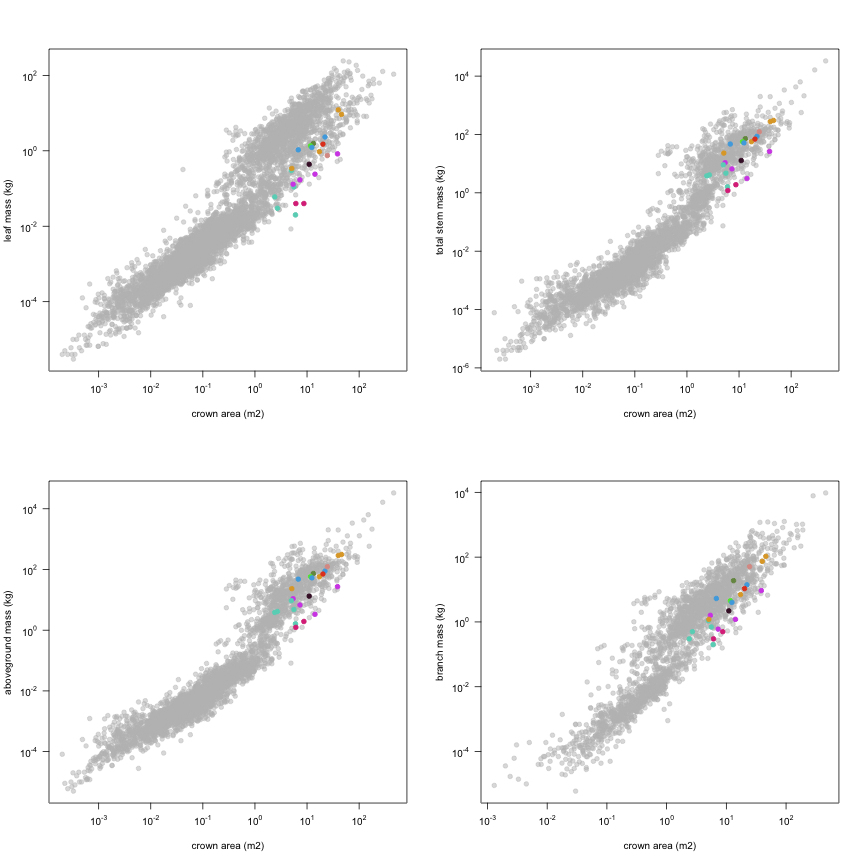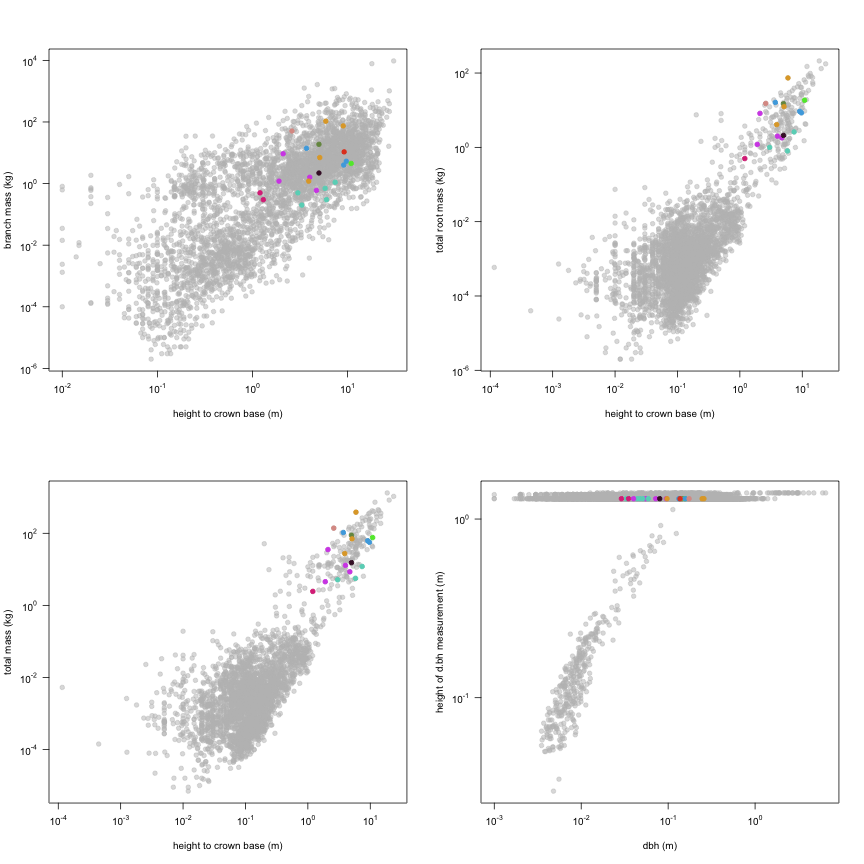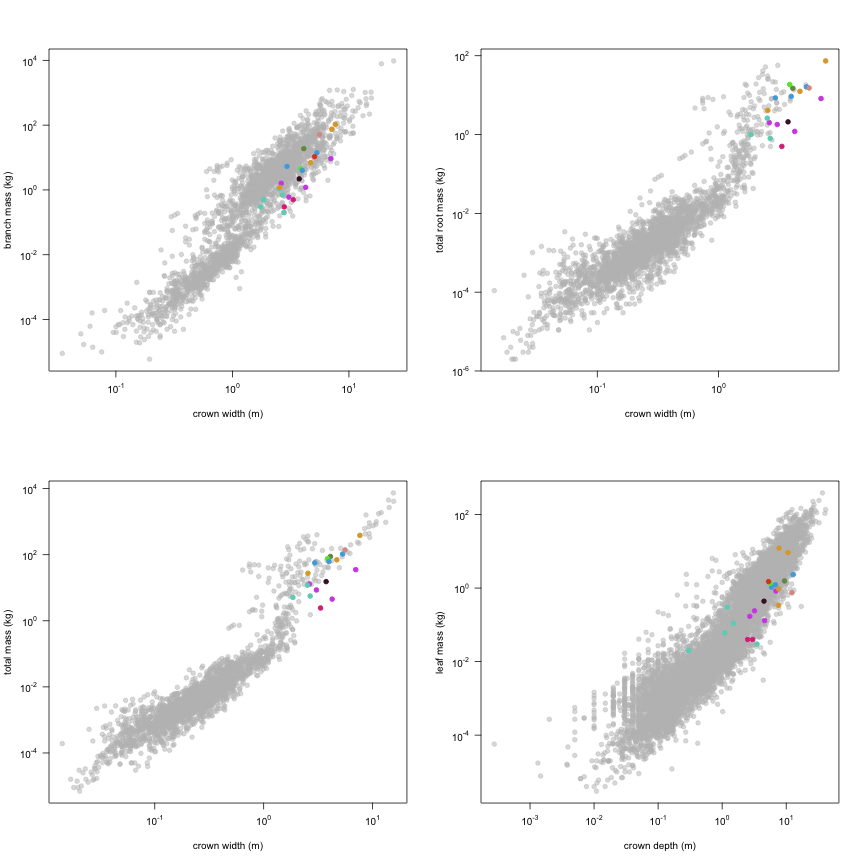-
Notifications
You must be signed in to change notification settings - Fork 19
Takahashi1999
Data contributor: Masae I. Ishihara, Hajime Utsugi, Hiroyuki Tanouchi, Tsutom Hiura
Email: [email protected]
Address:
- Graduate School for International Development and Cooperation, Hiroshima University, 1-5-1 Kagamiyama, Higashi-Hiroshima 739-8529, Japan
- Forestry and Forest Products Research Institute (FFPRI), 1 Matsunosato, Tsukuba, Ibaraki, 305-8687, Japan
- Hokkaido Research Center, Forestry and Forest Products Research Institute (FFPRI), Hitsujigaoka-7, Toyohira, Sapporo, Hokkaido, 062-8516, Japan
- Tomakomai Research Station, Field Science Center for Northern Biosphere, Hokkaido University, Takaoka, Tomakomai 053-0035, Japan
Citation: .Takahashi K, Yoshida K, Suzuki M, Seino T, Tani T, Tashiro N, Ishii T, Sugata S, Fujito E, Naniwa A, Kudo G, Hiura T and Kohyama T (1999). 'Stand biomass, net production and canopy structure in a secondary deciduous broad-leaved forest, northern Japan.' Research bulletin of the Hokkaido University Forests, 56, pp. 70-85.
DOI:
Abstract:
The dataset includes records for 23 individuals from 10 species belonging to 7 family(ies), presenting 1 functional type(s), growing in 1 condition(s) within 1 major type(s) of habitat, with data included for the following variables:
| Variable | Label | Units | N | Min | Median | Max |
|---|---|---|---|---|---|---|
| latitude | Latitude | deg | 23 | 43 | 43 | 43 |
| longitude | Longitude | deg | 23 | 142 | 142 | 142 |
| age | Age | yr | 21 | 25 | 54 | 57 |
| a.lf | Leaf area | m2 | 23 | 0.7 | 11 | 137 |
| a.stbh | Stem area at breast height | m2 | 23 | 0.00066 | 0.0071 | 0.052 |
| a.stbc | Stem area at crown base | m2 | 23 | 0.00025 | 0.0047 | 0.038 |
| a.cp | Crown area | m2 | 23 | 2.4 | 11 | 46 |
| h.t | Height | m | 23 | 3.6 | 9.5 | 17 |
| h.c | Height to crown base | m | 23 | 1.2 | 5 | 11 |
| d.bh | Dbh | m | 23 | 0.029 | 0.095 | 0.26 |
| h.bh | Height of d.bh measurement | m | 23 | 1.3 | 1.3 | 1.3 |
| d.cr | Crown width | m | 23 | 1.7 | 3.7 | 7.6 |
| c.d | Crown depth | m | 23 | 0.3 | 5.3 | 13 |
| m.lf | Leaf mass | kg | 23 | 0.02 | 0.44 | 12 |
| m.st | Total stem mass | kg | 23 | 1.2 | 23 | 302 |
| m.so | Aboveground mass | kg | 23 | 1.2 | 23 | 311 |
| m.br | Branch mass | kg | 23 | 0.2 | 2.2 | 106 |
| m.rt | Total root mass | kg | 18 | 0.5 | 6.1 | 74 |
| m.to | Total mass | kg | 18 | 2.4 | 31 | 385 |

And locally within the country:

The sites sampled are:
| Location | Longitude | Latitude | Vegetation |
|---|---|---|---|
| Japan-Tomakomai Research Forest of Hokkaido University- | 141.6 | 42.7 | Temperate forest |
The growing conditions of sampled plants was:
| Location | growingCondition |
|---|---|
| Japan-Tomakomai Research Forest of Hokkaido University- | field wild |
| Species | Family | Pft |
|---|---|---|
| Quercus crispula | Fagaceae | deciduous angiosperm |
| Carpinus cordata | Betulaceae | deciduous angiosperm |
| Sorbus alnifolia | Rosaceae | deciduous angiosperm |
| Magnolia obovata | Magnoliaceae | deciduous angiosperm |
| Acer mono | Aceraceae | deciduous angiosperm |
| Phellodendron amurense | Rutaceae | deciduous angiosperm |
| Prunus maximowiczii | Rosaceae | deciduous angiosperm |
| Prunus ssiori | Rosaceae | deciduous angiosperm |
| Fraxinus mandshurica | Oleaceae | deciduous angiosperm |
| Magnolia praecocissima | Magnoliaceae | deciduous angiosperm |
Sampling strategy: Sample trees were felled in a secondary deciduous broadleved forest (ca. 90 m a.s.l.) in Tomakomai Experimental Forest of Hokkaido University, Hokkaido, in September 1997. All trees > 3.0 cm in diameter at breast height on the 10 m x 10 m plot were cut at ground level. Tree height, height of the lowest living branch, and stem diameters at breast height were measured. Stem of each sample tree was cut at 1-m intervals and fresh mass of each segment was measured. Fresh mass of brach and those of leaves were measured for each branch. Roots were excavated using a backhoe. Soil was completely washed away by spraying river water with a compressor. Fresh mass of stump and roots was measured.
Leaf area: Several leaves were taken from each branch of each tree, and were separated into leaf blades and petioles. Leaf area was measured with a digital image processor. The dry masses of the leaf blades and petioles were weighed after oven-drying at 80degC for at least 2 days. The total leaf area was obtained by multiplying the estimated dry mass of leaves by its SLA and the ratio of leaf blades to leaves.
Stem cross sectional area: Estimated from stem diameter.
Height: Measured by measuring tape after felling the trees.
Crown area: Crown projection area was measured.
Biomass: Measured fresh weight was converted to dry weight from the ratio of dry to fresh weights. The ratio was estimated from subsamples. For stem subsample, a disc of ca. 10 cm thick was taken from each 1-m trunk segment, and for branch and root subsample, several discs with ca. 15-20 cm thick were taken from each branch or root at arbitrarily selected point. The mean ratio was used for each branch. Discs were oven-dried for a week at lOO degC and the dry mass was measured. For leaf subsample, several leaves were taken from each branch of each tree, and dry mass were weighed after oven-drying at 80 degC for at least 2 days.
Other variables: M.I. Ishihara, H. Utsugi, H. Tanouchi, and T. Hiura conducted formal search of reference databases and digitized raw data from Takahashi et al. (1999). Based on this reference, meta data was also created by M.I. Ishihara. Species name and family names were converted by M.I. Ishihara according to the following references: Satake Y, Hara H (1989a) Wild flower of Japan Woody plants I (in Japanese). Heibonsha, Tokyo; Satake Y, Hara H (1989b) Wild flower of Japan Woody plants II (in Japanese). Heibonsha, Tokyo.
This is how the study Takahashi1999 fits in the entire dataset (grey). each colour represents a species. A legend of species names with colours is included at the end for reports with 1 < n < 20 species.


































